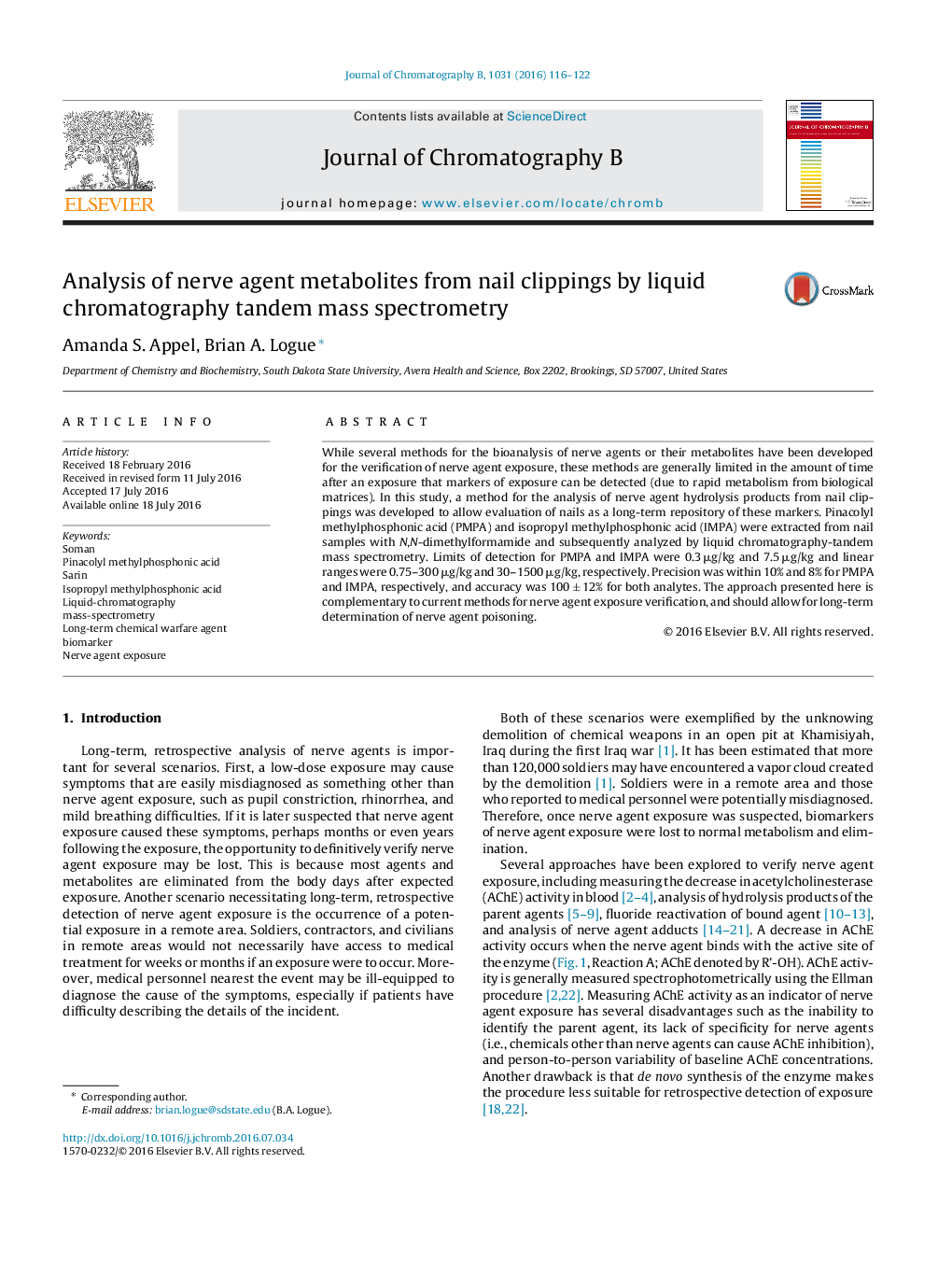| Article ID | Journal | Published Year | Pages | File Type |
|---|---|---|---|---|
| 1212596 | Journal of Chromatography B | 2016 | 7 Pages |
•Nerve agent metabolites were analyzed from nail clippings by LC–MS–MS.•The method achieved low limits of detection and excellent precision and accuracy.•The nail matrix should allow for long-term detection of nerve agent poisoning.
While several methods for the bioanalysis of nerve agents or their metabolites have been developed for the verification of nerve agent exposure, these methods are generally limited in the amount of time after an exposure that markers of exposure can be detected (due to rapid metabolism from biological matrices). In this study, a method for the analysis of nerve agent hydrolysis products from nail clippings was developed to allow evaluation of nails as a long-term repository of these markers. Pinacolyl methylphosphonic acid (PMPA) and isopropyl methylphosphonic acid (IMPA) were extracted from nail samples with N,N-dimethylformamide and subsequently analyzed by liquid chromatography-tandem mass spectrometry. Limits of detection for PMPA and IMPA were 0.3 μg/kg and 7.5 μg/kg and linear ranges were 0.75–300 μg/kg and 30–1500 μg/kg, respectively. Precision was within 10% and 8% for PMPA and IMPA, respectively, and accuracy was 100 ± 12% for both analytes. The approach presented here is complementary to current methods for nerve agent exposure verification, and should allow for long-term determination of nerve agent poisoning.
